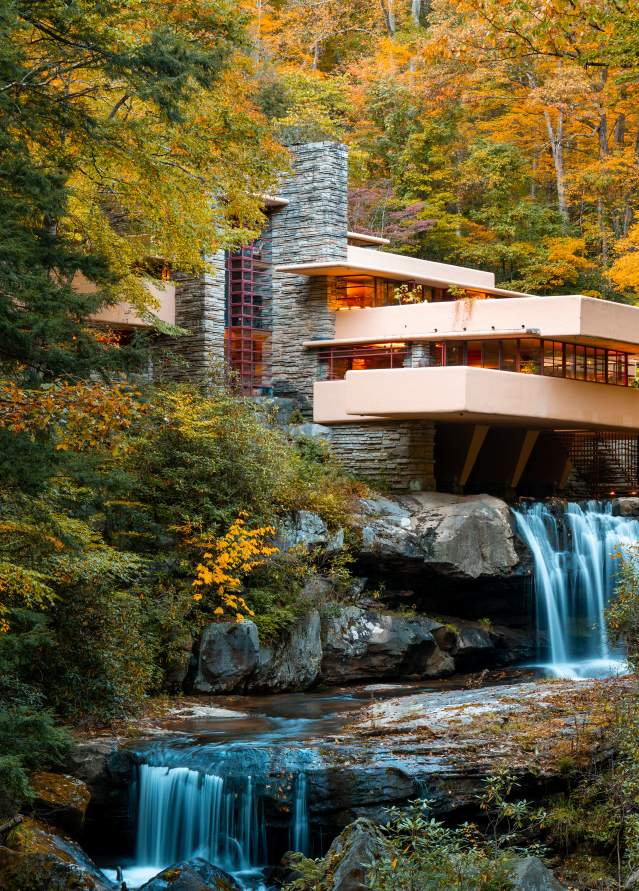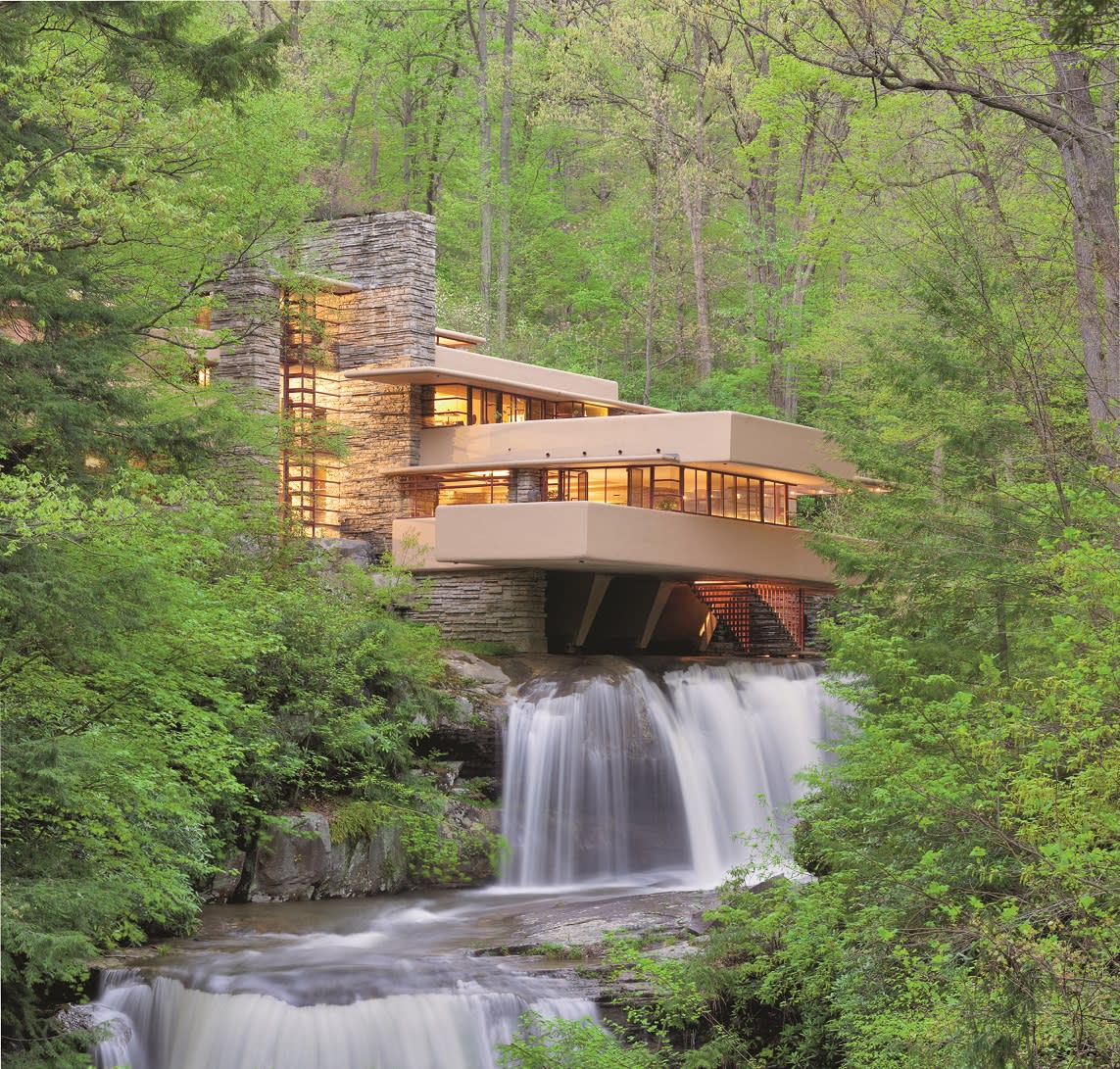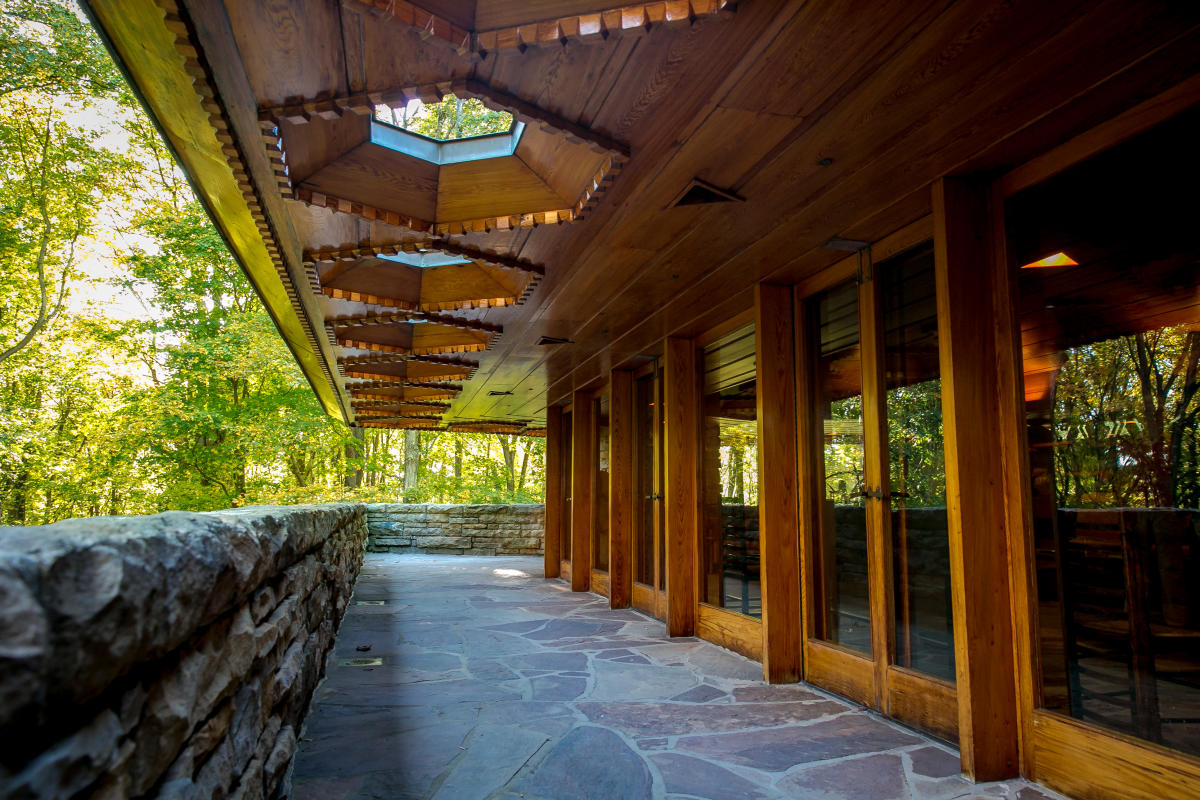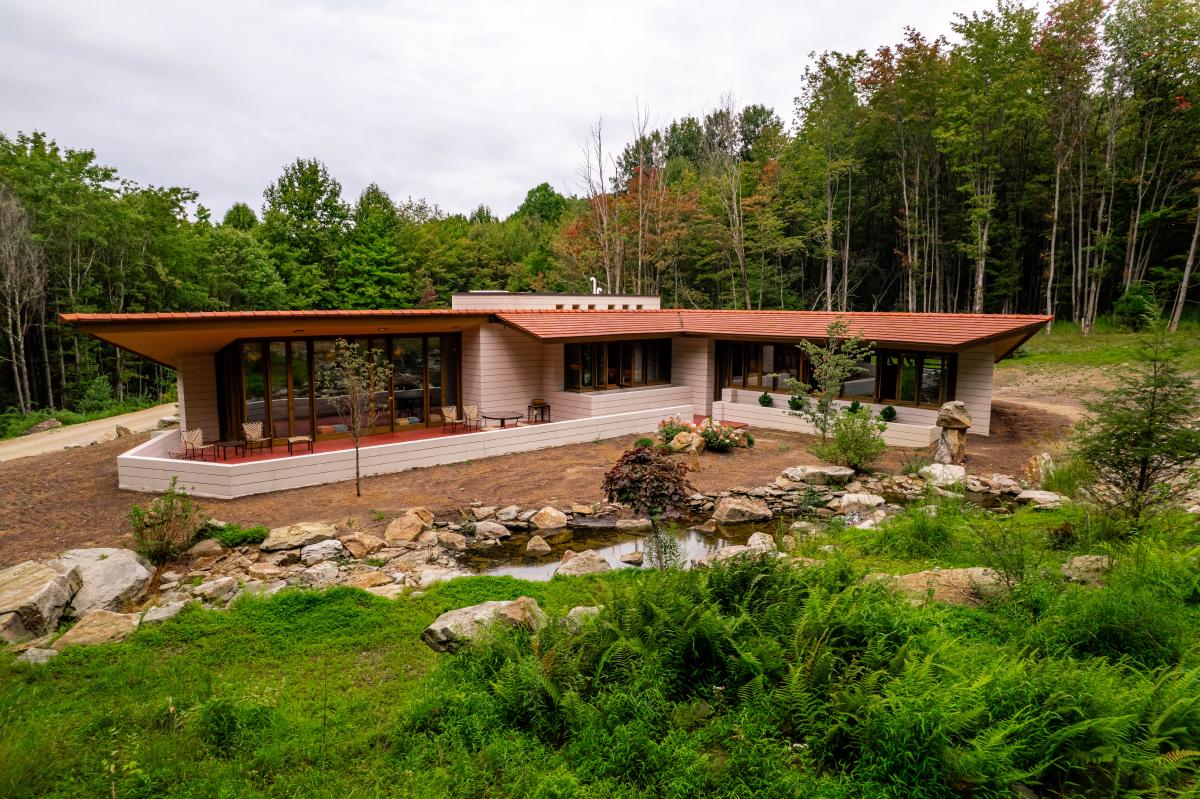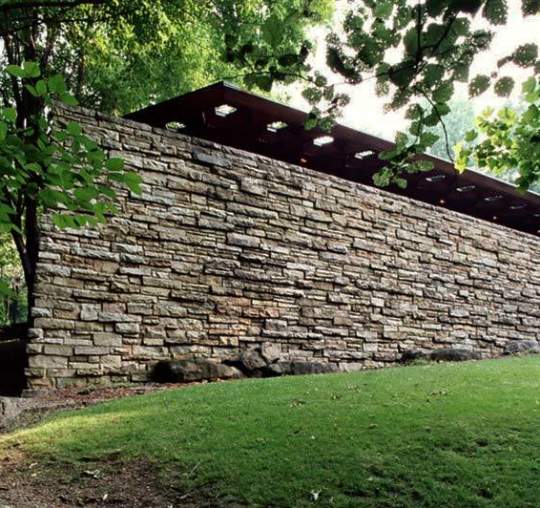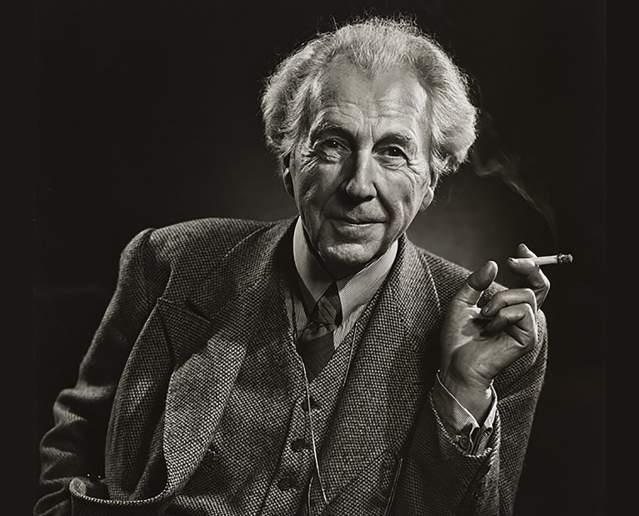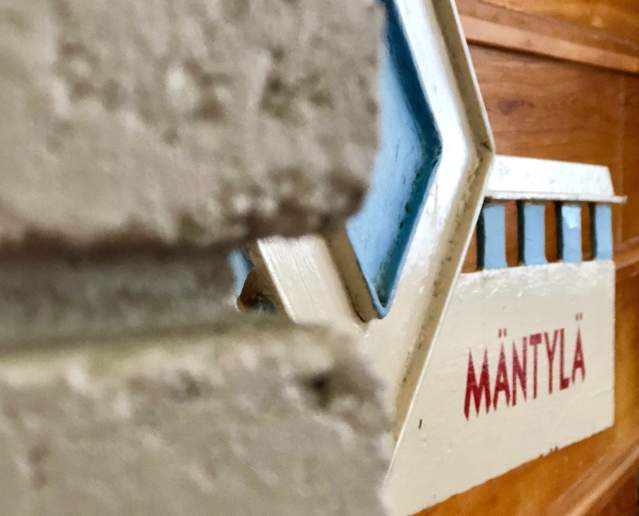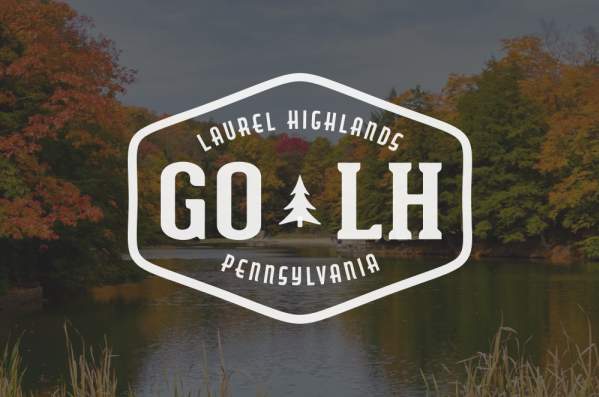The Great Wright Road Trip:
Fifty Years of Frank Lloyd Wright
Romance. It’s a feeling of mystery, excitement, and – in the right time and place –a sense of remoteness from everyday life. On this Frank Lloyd Wright-inspired road trip, you’ll experience the romance of the open road that culminates in feelings of awe, appreciation and wonder as you tour nine sites designed by America’s greatest architect.
The Wright Road Trip will allow you to easily explore the career-spanning breadth of Wright’s genius - from the epic grandeur of his mid-career masterpiece at Fallingwater to the burst of brilliance found at Kentuck Knob that was a highlight of Wright’s final years to the largest Prairie style house he ever designed at the Darwin D. Martin House.
Lovingly-cared for homes, restored masterpieces, reinvigorated landscapes, posthumously-built projects, stunning vistas and furniture from the imagination of the master himself can all be found on this memorable road trip between the Laurel Highlands of Western Pennsylvania and north to Erie, Pennsylvania, and Buffalo, New York.
Highlights of the Wright Road Trip can be done in as little as 2-3 days, but if you choose to explore the highways and byways, cities and small towns that lie between and within the two regions, you can easily spend 5-6 days experiencing the work of this American master and the region’s distinctive American heritage.
Set your compass for exploration, roll down the windows and breathe in mountain air as you embark on the Great Wright Road Trip in the scenic Laurel Highlands of Western PA on your way to Buffalo, New York. You are on the Wright path!
Day One
Arrival in the Laurel Highlands
We suggest you overnight in the Laurel Highlands to be fully rested for the Wright sites that await you. Stay at the Wright-designed Duncan House or Mäntylä at Polymath Park or experience the luxury of Falling Rock at Nemacolin, influenced by the renowned architect. Find more places to stay.
Wright Site No. 1: Fallingwater: Where Nature and Art are One
Fallingwater, now on the UNESCO World Heritage List, is hailed internationally as a masterpiece of 20th century architecture. Fallingwater was also named the “best all-time work of American architecture” in a poll of American Institute of Architects members. Designed in 1935, Fallingwater is one of Wright’s most widely acclaimed works and best exemplifies his philosophy of organic architecture: the harmonious union of art and nature. Since 1963, the Western Pennsylvania Conservancy has owned and preserved Fallingwater so the public can tour, experience and be inspired by this example of American architecture and history.
Depending upon your schedule and level of interest there are two tour options.
At the conclusion of your tour, allow time for your own personal photo shoot to capture the iconic image of Fallingwater as your backdrop. Perhaps this will be the only keepsake you’ll need, but we do suggest at least a look-see through the gift shop!
Lunch Suggestions: The Café at Fallingwater or Bittersweet Café.
For more information: fallingwater.org
Wright Site No. 2: Kentuck Knob: Drama and Serenity
Kentuck Knob, completed in 1956 for the Hagan Family, is an extraordinary example of Wright’s “Usonian” style, a group of approximately 60 homes he designed from the mid-1930s onward characterized by native materials, flat roofs and large cantilevered overhangs. Situated just below the crest of a hill, Kentuck Knob’s construction materials of native sandstone and tidewater red cypress blend naturally with the surroundings. Stretching to the east, just beyond the back terrace, is a breathtaking panorama of the Youghiogheny River Gorge and the beautiful Laurel Highlands mountains.
FRANK FACTS: The greenhouse at Kentuck Knob was originally at Fallingwater and was given as a gift by the Kaufmanns to the Hagans since they were neighbors and good friends. Mrs. Hagan was a talented gardener and she put the Fallingwater greenhouse to good use.
Not to be missed: A sculpture meadow featuring 35 sculptures by artists such as Andy Goldsworthy, Harry Bertoia, Claes Oldenburg, Ray Smith, Michael Warren, Katherine Gili and Sir Anthony Caro. Found object art pieces include a French pissoir, red British telephone boxes, and a large, vertically upright concrete slab from the Berlin Wall. The meadow is reached by a walking path through woods from either the house or the visitors center.
And, for a taste of the region’s heritage, try a Hagan’s ice cream cone. The original owners of Kentuck Knob, the Hagans, were the founders of Hagan Ice Cream, which can still be found throughout the region to this day.
For more information: kentuckknob.com
Lodging Suggestions: Have you dreamed of spending the night in a Wright property? Make those dreams come true and spend the night at one of the four houses at Polymath Park. You’ll wake up to a fitting culmination of your Frank Lloyd Wright Road Trip.
Day Two
Wright Site No. 3: Polymath Park: A Frank Lloyd Wright Oasis
Polymath Park has been described as a “Frank Lloyd Wright oasis” for good reason. On this 125-acre park-like setting, you can find two Wright-designed homes, as well as two designed by Wright apprentice Peter Berndtson. Berndtson’s Balter House and Blum House are original to the location while Wright’s Duncan House and Mäntylä House were moved from other locations and reconstructed on-site.
For more information: Polymathpark.com
At the conclusion of your tour, dine at the onsite Treetops restaurant before heading north to Erie, Pennsylvania. Via I-76, head west towards Pittsburgh where you'll pick up I-79 North to Erie. Approximate travel time: 2 hours, 45 minutes.
Wright Site No. 4: FLW's San Francisco Office: By Wright, For Wright
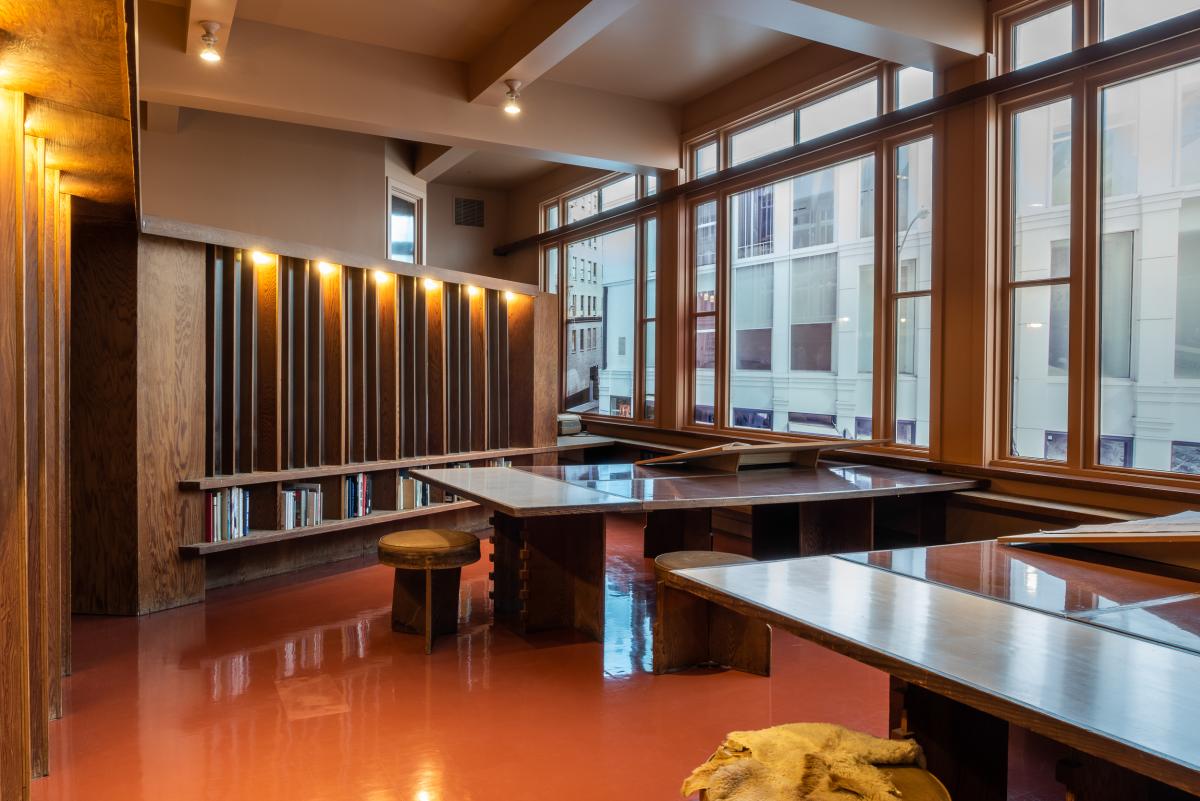
Experience Frank Lloyd Wright’s original San Francisco office at the Erie County Historical Society-Hagen History Center. This exhibit was reconstructed in a building specifically designed to house the iconic office. When visitors enter, they feel they have walked into the office after the staff stepped out for lunch. Tall windows, in what was a second-floor office, look out on a scene that replicates what clients and Wright himself would have seen. Wright’s 1930 Cord L-29 Cabriolet is also on display.
For more information: https://www.eriehistory.org/about/whats-new/frank-lloyd-wrights-iconic-san-francisco-office-comes-to-erie-pennsylvania
At the conclusion of your tour, head east via I-90 to Buffalo, NY. Approximate travel time: 1 hour, 30 minutes.
Lodging Suggestions in Buffalo, New York: InnBuffalo, the Mansion on Delaware Avenue, the Curtiss Hotel or the Parkside House Bed & Breakfast. Overnight in Buffalo to be fully rested for the Wright sites that await you.
Day Three
Wright Site No. 5: The Martin House: A Well-Nigh Perfect Composition
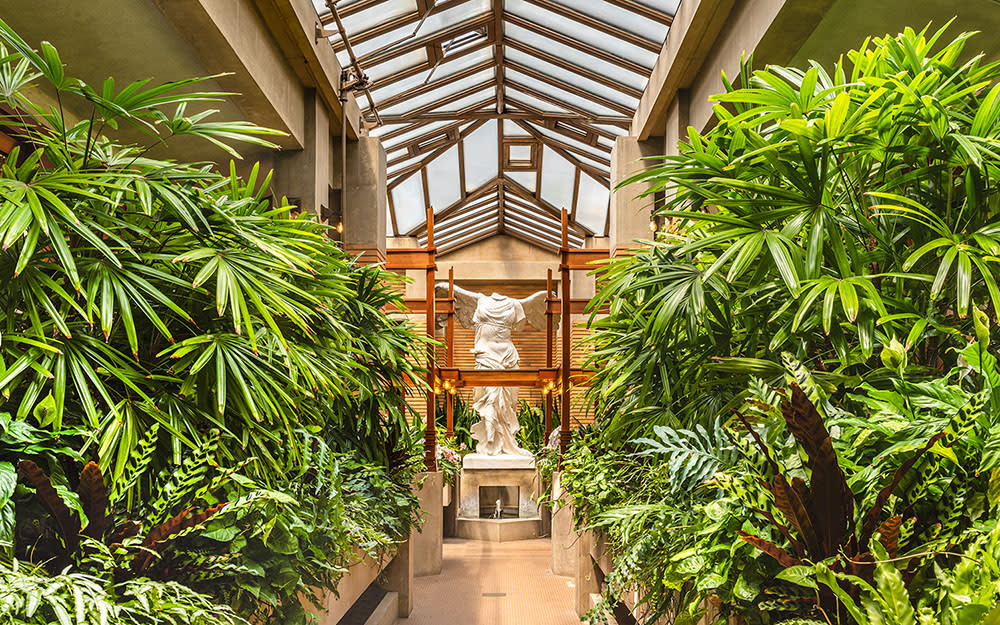
The Martin House stands in the lovely Parkside neighborhood of Buffalo. Built between 1903-1906, the 1.5-acre residential estate features six distinct but interconnected structures: the main Martin House, the Barton House, a conservatory, carriage house, gardener’s cottage, and a 100-foot-long pergola. Wright referred to the Martin House as a “domestic symphony” and a “well-nigh perfect composition.” Plan extra time to explore the grounds and experience the recently-restored historic landscape.
FRANK FACTS: There are 8.5 miles of wood trim and 110 distinct molding shapes inside the Martin House alone. Some of the molding assemblies comprise nine separate pieces.
For more information: martinhouse.org
Lunch Suggestions: The newly-opened Statler Café at the Martin House offers light refreshments and grab-and-go sandwiches. JAM Parkside serves coffee, tea, pastries and toast. Kostas Restaurant on nearby Hertel Avenue serves breakfast, lunch and dinner daily.
Wright's Buffalo Venture: Posthumous Projects
In addition to the Martin House and Graycliff, Darwin and Isabelle Martin's summer home, Wright's Buffalo venture includes three posthumously-constructed works: a boathouse, mausoleum and gas station.
Wright Site No. 6: The Filling Station at the Pierce-Arrow Museum: An Ornament to the Pavement

In 1927, the Filling Station was intended for a site just blocks from where it now stands. But it wasn’t until 2014 that Wright’s “ornament to the pavement” was constructed as an exhibit at the Buffalo Transportation Pierce-Arrow Museum. The station’s most striking features are an extensive copper roof and two 45-foot poles that Wright called “totems.” The museum’s collection is highlighted by the magnificent Pierce-Arrow motor cars that were manufactured in Buffalo until the company’s demise in 1938.
For more information: pierce-arrow.com
Wright Site No. 7: Blue Sky Mausoleum: A Final Resting Place of Noble Effect
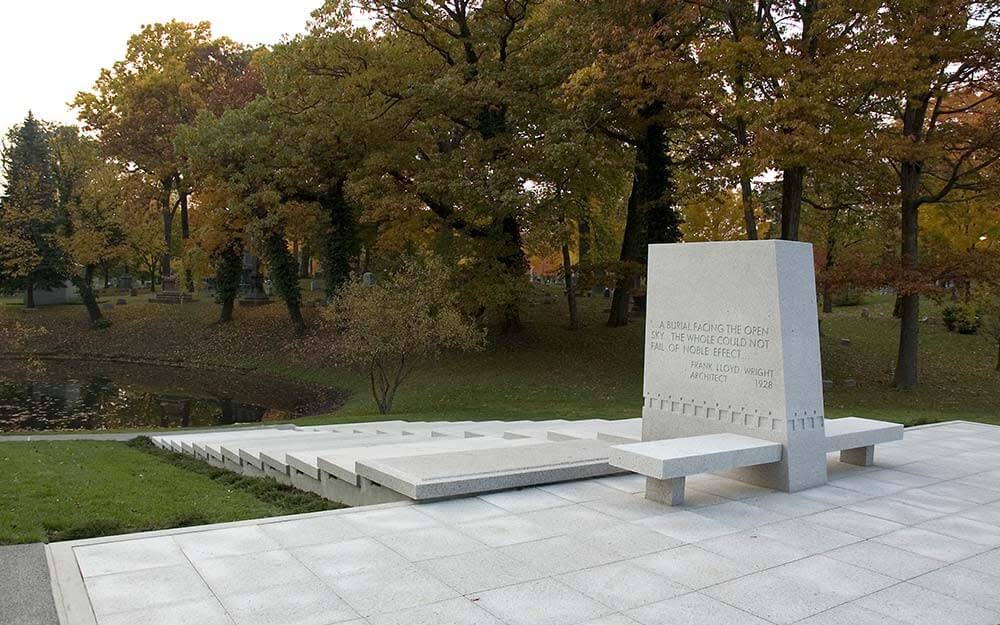
Located in the leafy confines of Forest Lawn Cemetery, Blue Sky Mausoleum was commissioned in 1928 by the Martin Family but left on the drawing board when their fortune was lost during the Great Depression. Posthumously constructed in 2004, the mausoleum’s tiered steps provide a modernist counterpoint to the grand Victorian-style monuments that dot the grounds of this historic cemetery.
Forest Lawn Cemetery is open daily from 9 a.m. to 5 p.m.
For more information: blueskymausoleum.com
Wright Site No. 8 The Fontana Rowing Boathouse: From Wisconsin to Western New York
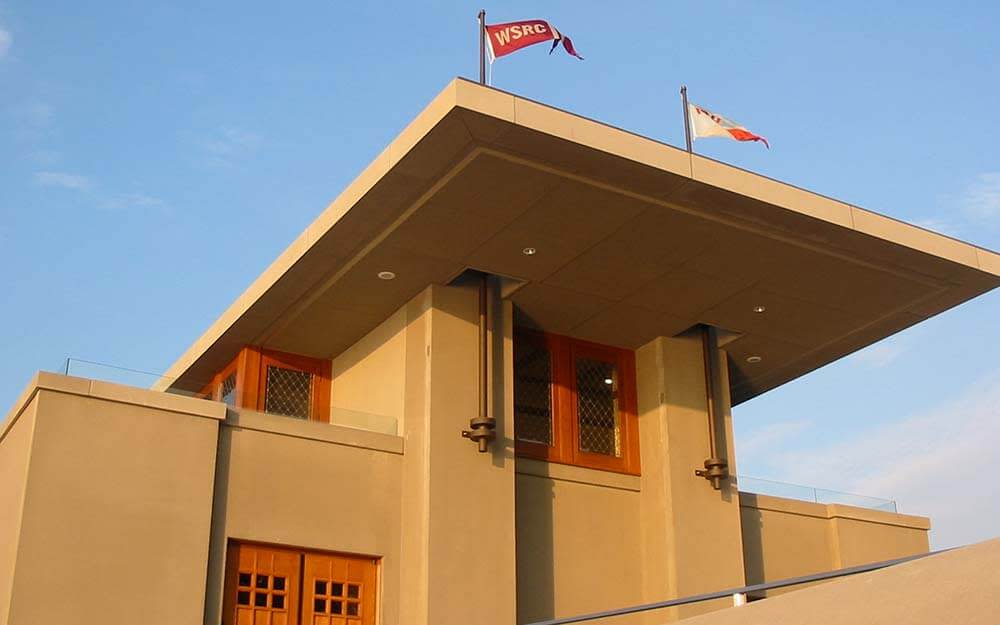
Designed in 1905 for a site at the University of Wisconsin but never built, this working boathouse ultimately found a companionable home in 2007 at Buffalo’s West Side Rowing Club overlooking the Black Rock Canal and Niagara River.
Open by appointment.
For more information: wrightsboathouse.org
Day Four
Wright Site No. 9: Graycliff: Isabelle Martin's Summer Place
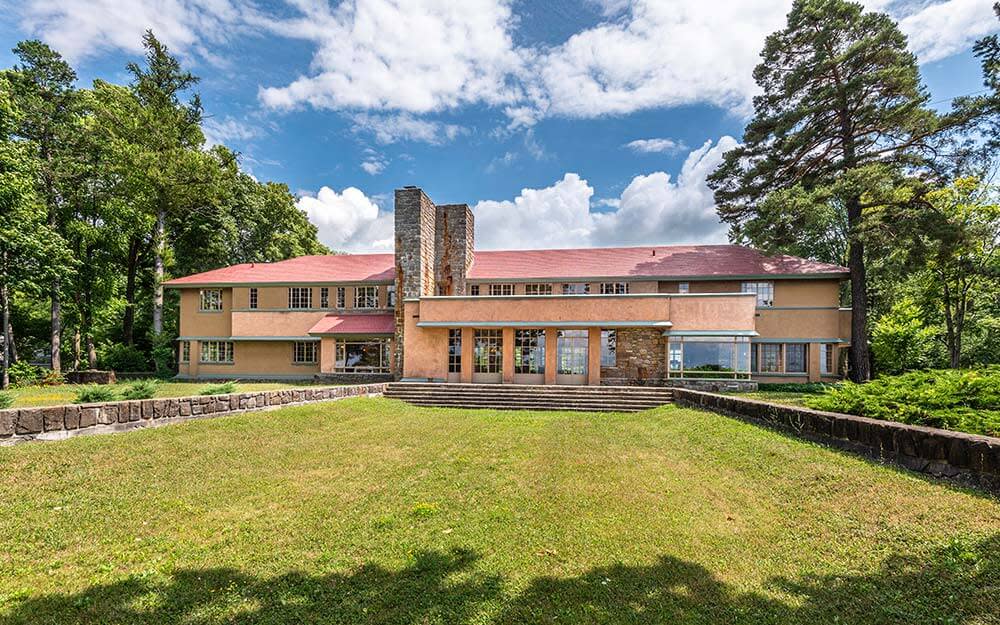
Graycliff was built between 1926-31 for Isabelle R. Martin, wife of Darwin Martin, the Buffalo businessman who was one of Wright’s greatest patrons. The house was built as a summer home for the family. Located a short 30-minute drive from Buffalo, Graycliff sits on a gorgeous piece of property overlooking Lake Erie. Located a short 25-minute drive from downtown Buffalo, Graycliff sits on a gorgeous piece of property overlooking Lake Erie. Graycliff was one of the few commissions Wright received in the 1920s and its design contains elements that would be given fuller expression a few years later at Fallingwater.
FRANK FACTS: Tichenor limestone taken directly from the cliff on site was used in the construction of the houses at Graycliff, as well as the stone walls on the property. If you look closely, you can find embedded fossils!
For more information: experiencegraycliff.org
Extending Your Stay
Western Pennsylvania and western New York were at the center of the commercial, cultural and social ferment of the late 19th and early 20th centuries. The legacy of this pivotal period in American history can be found in a variety of historic home tours, walking tours and museum collections along the route between the Laurel Highlands and Buffalo.
Add a day or two to your itinerary and discover this rich vein of Americana at places like the the Victorian-era summer colony at the Chautauqua Institution in Chautauqua, New York and the home of the American Arts & Crafts Movement at the Roycroft Inn and Campus in East Aurora, New York. Explore Buffalo Tours gives walking tours of the city The New York Times called “a textbook in modern American architecture.” And nearby Niagara Falls State Park offers visitors the experience of the “natural Niagara” as envisioned by its designer -- the great landscape architect Frederick Law Olmsted.
Closer to Pittsburgh, you’ll find a magnificent slice of American heritage at Frick Pittsburgh, or take a tour of Pittsburgh’s architectural treasures offered by the Pittsburgh History & Landmarks Foundation. Also recommended is a hike or a bike ride on a portion of the longest multi-use trail in Pennsylvania – the Great Allegheny Passage. This converted trail, which once felt the heavy rumble of freight trains, now offers a gentle grade for a nearly level ride along the Youghioheny River through the Laurel Highlands.
Frank Lloyd Wright's Fallingwater®
- 1491 Mill Run Road
Fallingwater®, one of Frank Lloyd Wright’s most widely acclaimed works, was designed in 1935 for the family of Pittsburgh department store owner Edgar…
Frank Lloyd Wright's Kentuck Knob
- 723 Kentuck Road
Just 7 miles southwest of Fallingwater and high atop a bluff overlooking the Youghiogheny River Gorge, stands another Frank Lloyd Wright architectural…
48 Hours of Frank Lloyd Wright in the Laurel Highlands
Did you know that there are four Frank Lloyd Wright homes in the Laurel Highlands? Experience Frank Lloyd Wright’s masterpiece, Fallingwater…
Rebuilding it the Wright Way
In his lifetime, America’s most prominent architect, Frank Lloyd Wright, designed more than 1,000 structures and oversaw the construction of 532…
